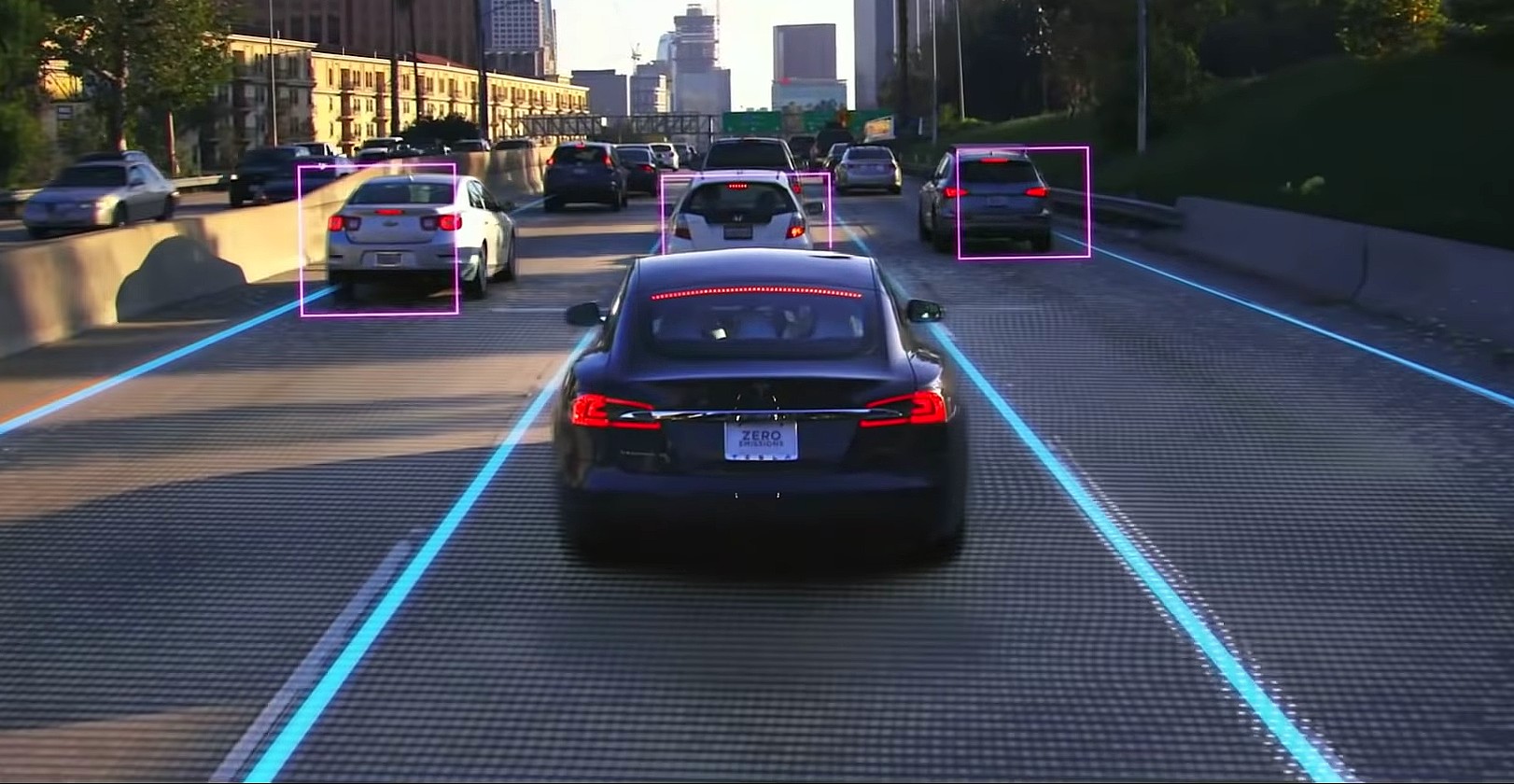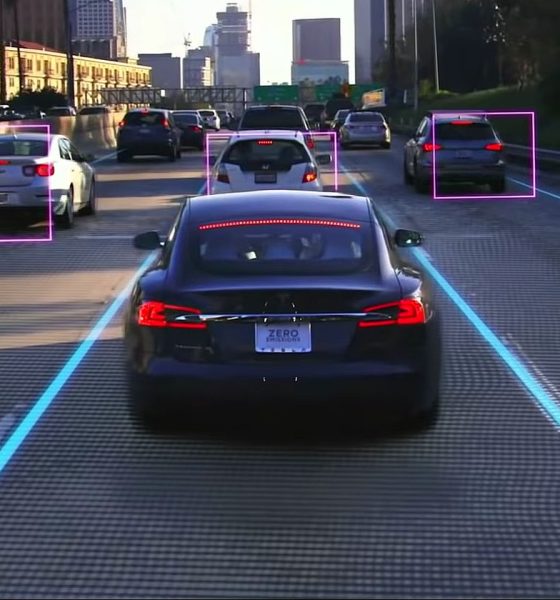

Lifestyle
Should Tesla carry the burden of teaching the public about artificial intelligence?
Welcome to a FREE preview of our weekly exclusive! Each week our team goes ‘Beyond the News’ and handcrafts a special edition that includes our thoughts on the biggest stories, why it matters, and how it could impact the future.
You can receive this newsletter along with all of our other members-exclusive newsletters, become a premium member for just $3/month. Your support goes a long way for us behind the scenes! Thank you.
—
In a recent podcast discussion Elon Musk had with AI expert Lex Fridman about artificial intelligence, consciousness, and Musk’s brain-computer interface company Neuralink, an interesting question arose about Tesla’s role as an educator in that realm. Referring specifically to the Smart Summon feature that’s part of the company’s Version 10 firmware, Fridman asked Musk whether he felt the burden of being an AI communicator by exposing people for the first time (on a large scale) to driverless cars.
To be honest, Musk’s response wasn’t really, well, responsive. He deferred to the more commercial-oriented goals of the company: “We’re just trying to make people’s lives easier with autonomy.” The long-term goals of Neuralink are pretty scary for mainstream humans, so to me, this question really deserves a long sit-and-think. After all, we’re talking computer self-awareness and capabilities well beyond what we’d consider superhuman and beyond the ability of humans to control after a certain point. Neuralink wants the type of AI connection implanted in our brains.
On one hand, the evolution of Autopilot with each iteration and the evolution of Smart Summon with each new release exposes people to the process of how humans teach computers and how computers teach themselves. In other words, it shows people that AI is somewhat similar to how people learn. However, I don’t know that it gives everyday people a full picture of what Musk is really talking about all the time regarding the pace of AI learning and how that leads to doom scenarios.
If anything, is Tesla lowering expectations for AI’s future? If a Tesla is the first “robot” people see, and then they see years of functionality that’s sub-par to an attentive human at the wheel before seeing the full promise of the Tesla Network, what picture is being painted? Then, what about the wake of uncertainty it will leave behind?
In the interview, Musk described our minds as essentially a monkey brain with a computer trying to make the monkey brain’s primitive urges happy all the time. Once we start letting computers take over what little functions the monkey brain enjoyed or needed to keep in check (driving, painting, laboring, etc.), how is the AI eventually going to decide to deal with what it will just see as…the monkeys? Right now, we’re seeing robot cars driving into curbs and highway dividers, making us feel pretty superior to them despite the fact that humans do this much more frequently. What happens if the car one day decides to do that on purpose because its calculations factor out that humans need to exist?
Okay, I know I’m getting a touch ridiculous here, but it just brings me back to Fridman’s original question about whether Tesla carries the burden of educating the public on these matters with their push for self-driving. Perhaps if they were just focused on moving the world to sustainable energy and production, their driver-assist features would be just as Musk describes them – a convenience or value-added feature. After all, most other self-driving companies and auto manufacturers working on self-driving just have the customer in mind, not so much a robot overlord future.
But that’s not the future Musk is working towards. He’s both warning us about the future of AI while actively developing our defense against it. Should his car company then play a big role in acclimating and teaching people about what AI will really be able to do beyond getting them to work and back? Hosting 3-4 hour long “Investor Day” presentations are part of this educational effort, I suppose, but 99% (or more) of the general public is not going to be interested or even able to understand what Tesla’s genius developers are talking about, much less understand how it might apply to their lives beyond their cars one day.
I don’t really know what Tesla’s teaching could or would or should look like, but it’s an interesting question given the acceleration the company is making in bringing AI into our lives on a scale much bigger than harvesting our data to sell us ads.

Lifestyle
Tesla Model S Plaid battles China’s 1500 hp monster Nurburgring monster, with surprising results
There is just something about Tesla’s tuning and refinement that makes raw specs seem not as game-changing.

The Tesla Model S Plaid has been around for some time. Today, it is no longer the world’s quickest four-door electric sedan, nor is it the most powerful. As per a recent video from motoring YouTube channel Carwow, however, it seems like the Model S Plaid is still more than a match for some of its newer and more powerful rivals.
The monster from China
The Xiaomi SU7 Ultra is nothing short of a monster. Just like the Model S Plaid, it features three motors. It also has 1,548 hp and 1,770 Nm of torque. It’s All Wheel Drive and weighs a hefty 2,360 kg. The vehicle, which costs just about the equivalent of £55,000, has been recorded setting an insane 7:04.957 at the Nurburgring, surpassing the previous record held by the Porsche Taycan Turbo GT.
For all intents and purposes, the Model S Plaid looked outgunned in Carwow’s test. The Model S Plaid is no slouch with its three motors that produce 1,020 hp and 1,420 Nm of torque. It’s also a bit lighter at 2,190 kg despite its larger size. However, as the Carwow host pointed out, the Model S Plaid holds a 7:25.231 record in the Nurburgring. Compared to the Xiaomi SU7 Ultra’s record, the Model S Plaid’s lap time is notably slower.
Real-world tests
As could be seen in Carwow’s drag races, however, Tesla’s tech wizardry with the Model S Plaid is still hard to beat. The two vehicles competed in nine races, and the older Model S Plaid actually beat its newer, more powerful counterpart from China several times. At one point in the race, the Xiaomi SU7 Ultra hit its power limit due to its battery’s temperature, but the Model S Plaid was still going strong.
The Model S Plaid was first teased five years ago, in September 2020 during Tesla’s Battery Day. Since then, cars like the Lucid Air Sapphire and the Xiaomi SU7 Ultra have been released, surpassing its specs. But just like the Model Y ended up being the better all-rounder compared to the BYD Sealion 7 and the MG IM6, there is just something about Tesla’s tuning and refinement that makes raw specs seem not as game-changing.
Check out Carwow’s Model S Plaid vs Xiaomi SU7 drag race video below.
Lifestyle
500-mile test proves why Tesla Model Y still humiliates rivals in Europe
On paper, the BYD Sealion 7 and MG IM6 promised standout capabilities against the Model Y.

BYD is seeing a lot of momentum in Europe, so much so that mainstream media has taken every opportunity to argue that the Chinese automaker has beaten Tesla in the region. But while BYD sales this year in Europe are rising and Tesla’s registrations remain challenged, the raw capabilities of vehicles like the Model Y are difficult to deny.
This was highlighted in a 500-mile challenge by What Car? magazine, which showed that the new Tesla Model Y is more efficient, cheaper to run, and more reliable than rivals like the BYD Sealion 7, and even the nearly 400 KW-charging MG IM6.
Range and charging promises
On paper, the BYD Sealion 7 and MG IM6 promised standout capabilities against the Model Y. The Sealion 7 had more estimated range and the IM6 promised significantly faster charging. When faced with real-world conditions, however, it was still the Model Y that proved superior.
During the 500-mile test, the BYD nearly failed to reach a charging stop, arriving with less range than its display projected, as noted in a CarUp report. MG fared better, but its charging speeds never reached its promised nearly-400 kW charging speed. Tesla’s Model Y, by comparison, managed energy calculations precisely and arrived at each stop without issue.
Tesla leads in areas that matter
Charging times from 25% to 80% showed that the MG was the fastest at 17 minutes, while Tesla and BYD were close at 28 and 29 minutes, respectively. Overall efficiency and cost told a different story, however. The Model Y consumed 19.4 kWh per 100 km, compared to 22.2 for MG and 23.9 for BYD. Over the full trip, Tesla’s charging costs totaled just £82 thanks to its supercharger network, far below BYD’s £130 and MG’s £119.
What Car? Magazine’s testers concluded that despite BYD’s rapid sales growth and the MG IM6’s seriously impressive charging speeds, Tesla remains the more compelling real-world choice. The Model Y just offers stability, efficiency, and a proven charging infrastructure through its Supercharging network. And as per the magazine’s hosts, the Model Y is even the cheapest car to own among the three that were tested.
Watch What Car? Magazine’s 500-mile test in the video below.
Lifestyle
Tesla Cybertruck slapped with world’s least intimidating ticket, and it’s pure cringe
One cannot help but cringe and feel second-hand embarrassment at the idea of a person just driving around with a stack of these babies.

A Cybertruck parked at Stanford Shopping Center in California was recently hit with what might be the most try-hard piece of paper ever slipped under a wiper blade: a “fake citation” accusing the driver of supporting a “fascist car.”
The note, shared on X by Tesla staff program manager Ryan Torres, quickly made the rounds on X, where it quickly gained attention as an example of how not to protest.
The world’s least intimidating ticket
According to the citation, the supposed “violation” was “driving a fascist car.” The remedial action? Take the bus, call an Uber, or ride a bike. The note also dubbed Elon Musk a “chainsaw-wielding Nazi billionaire.” Now, protests against Tesla and Elon Musk have become commonplace this year, but one cannot help but cringe and feel second-hand embarrassment at the idea of a person just driving around with a stack of fake anti-Tesla/Musk citations.
Torres pointed out the irony himself in his post on X. Tesla currently employs over 140,000 Americans, and SpaceX has put the U.S. firmly back at the top of space technology. As Torres put it, maybe the person behind the world’s least intimidating ticket should “read a book on innovation before vandalizing” other people’s property.
Peak performative clownery
Not to mention that the fake ticket’s logic collapses under its own weight. EVs like the Cybertruck are literally designed to reduce emissions, not “destroy the economy.” If anything, Tesla has bolstered the United States’ economy by fueling jobs in engineering, manufacturing, and clean energy. It’s not the first time a Tesla has been the target of vandalism or politically charged notes, but this one stands out for sheer cringe value.
Torres summed it up neatly: “Peak clownery.” On that point, at least, the citation earns full marks. In a way, though, perhaps cringe fake tickets are not as bad as the literal firebombs that were being thrown at Tesla stores and cars earlier this year because some critics were gleefully misinformed about Elon Musk.








